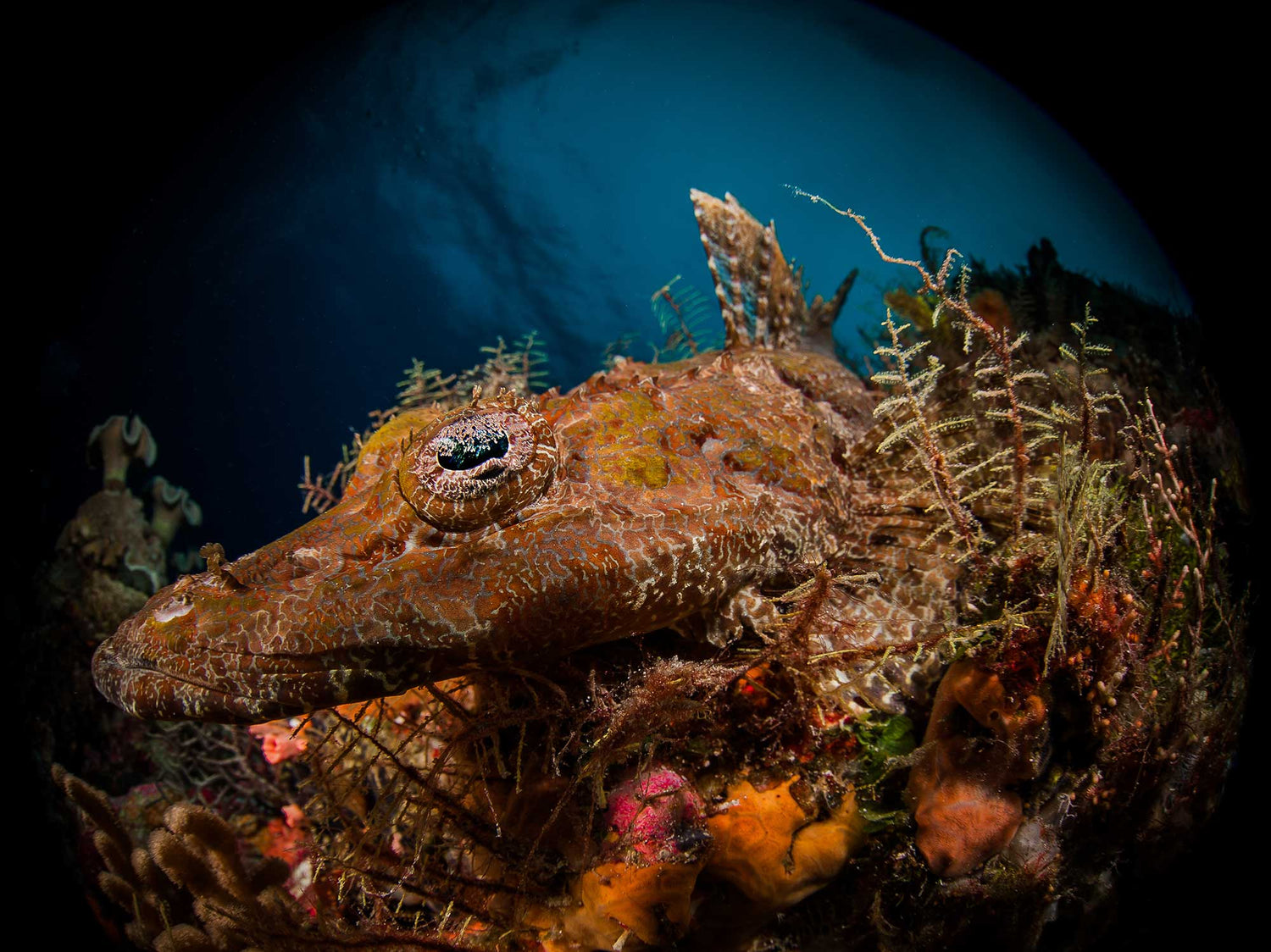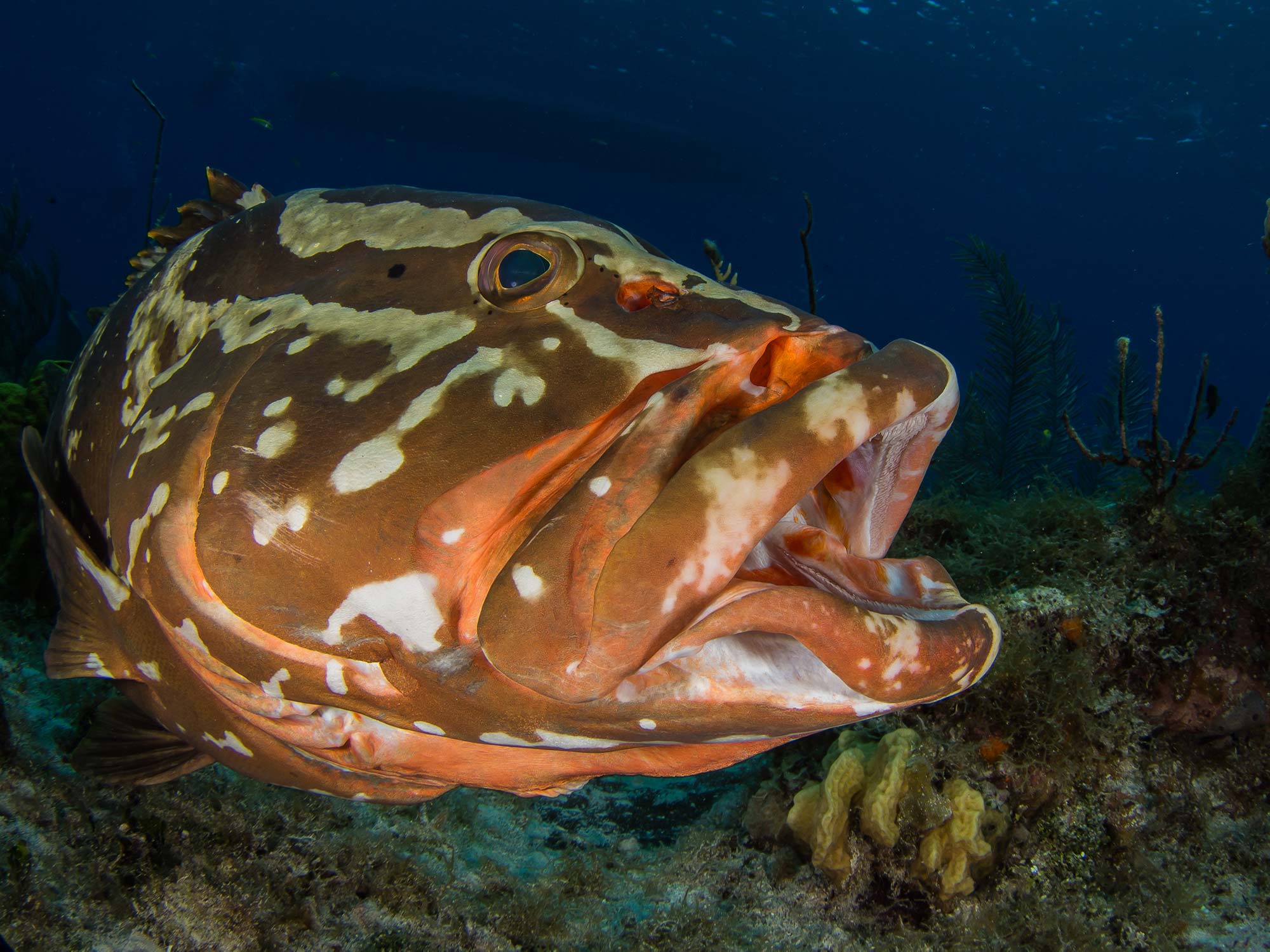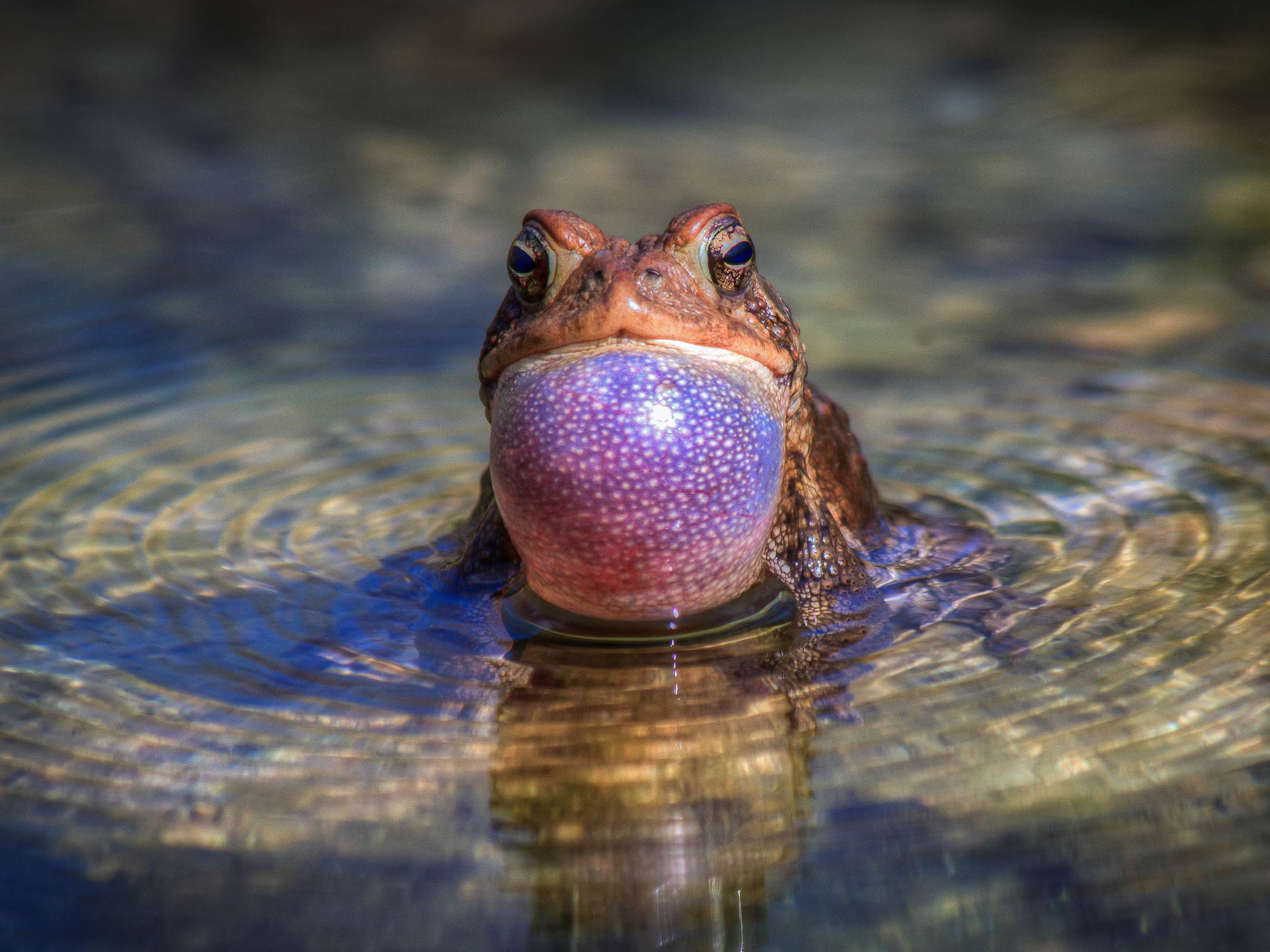There are a lot of reasons to photograph the flathead crocodilefish (also known as De Beaufort's flathead). Their camouflage alone is fascinating, their lace-like eyes are a macro photographers dream, plus they're ambush predators so they won't be dodging your dome port as long as you're not moving too quickly. Whether you're shooting with a fisheye or macro lens you're sure to get a good shot using these Cheat Sheet tips, just don't forget your strobes at home.

Flathead crocodilefish will sit still for extended periods of time due to their hunting strategies. Stay low and slow, and don't make too much noise, and you'll have yourself a steady subject to try different compositions with. © Steve Miller
Where
Western Pacific Ocean; Wakatobi or Lembeh are popular places to find these animals.
DSLR + Mirrorless
ISO: 200-400.
Mode: Manual.
Aperture: Variable through whole range, depending upon how dark or light you wish your background to be. Start with F-8 if you aren't sure, then change after previewing your image. These fish will let you get super close, so you can stop down as far as you like as long as you use a flash.
Shutter Speed: 1/125 to 1/160 flash synch. You will want to use flash to bring out their colors.
Lens: Utilize a macro lens for their unique eye patterns or even a closeup of their skin. A wide angle or fisheye will create a full scene.
Point + Shoot
ISO: 100 to 200.
Mode: Manual or Aperture Priority. If you are shooting natural light, Program will work as well.
Aperture: Full range depending on sun in your frame. To accentuate their colors close the Aperture enough for your strobe to be the predominate light (1-2 stops darker than ambient will work well).
Shutter Speed: 1/125 to 1/200 flash synch.
Lens: Full wide angle with or without a wide angle wet lens for Close Focus Wide Angle, macro mode can bring out the signature eye, with all of its color and textures.

We think the Flathead crocodilefish might have the most beautiful eye in the ocean. With their lacy eyelids and iridescently hued eyeballs there's so much macro magic to capture if they'll let you get close enough. It's also a great opportunity to use a fluorescent filter. © Steve Miller
Strobes
Strobes are a must for these camouflage artists, you need the light to really bring out their dynamic coloring. If you're going for a wide angle shot set your manual camera exposure to image the water in the background to a pleasing deeper blue and set your strobes to TTL. Be stealthy if you need to reposition your strobes as you don't want to spook them making too much noise or moving around too abruptly.
Technique
Look for flatheads where you want them to be - an easy angle to photograph - and look for them on every dive. The edge of a drop-off is an ideal place because you can position yourself to be lower than the fish. A downward angle might cause this subject to get lost among all of the other color and texture on the reef. A low and slow approach to a resting fish will reward you with a subject that will stay put, even through many frames. Classic Close Focus Wide Angle strobe positioning here can make for very sharp images, since very little water will be between the lens and the fish. Keep this in mind when positioning your strobes, and selecting a lens to use. For fast focus and an extreme depth of field, fisheye lenses excel.

Flathead crocodilefish may be the most versatile fish to photograph as far as lenses go, just don't forget your strobes at home. © Steve Miller
Want a few more details?
Check out our full scope article Shooting The Colorful and Camouflaged Flathead Crocodilefish. If you'd like to learn more don't hesitate to emails us via ikelite@ikelite.com
Want the easy way to improve your underwater photography? Sign up for our weekly newsletter for articles and videos directly in your inbox every Friday:
Additional Reading
Why You Need Strobes Underwater
Fluorescence and Luminance Underwater Photography
The Importance of Hitting the Water with a Shot in Mind [VIDEO]
Close Focus Wide Angle In Depth
Wide Angle Fisheye to Macro on the Same Dive with the Olympus Tough TG-6
Shooting the Colorful and Camouflaged Flathead Crocodilefish













